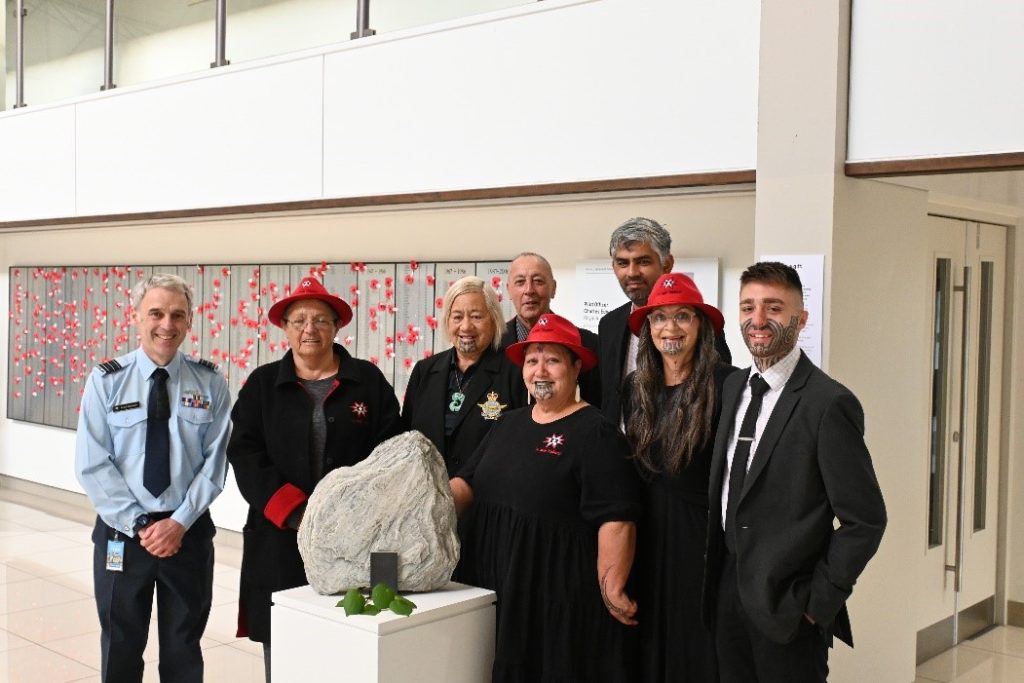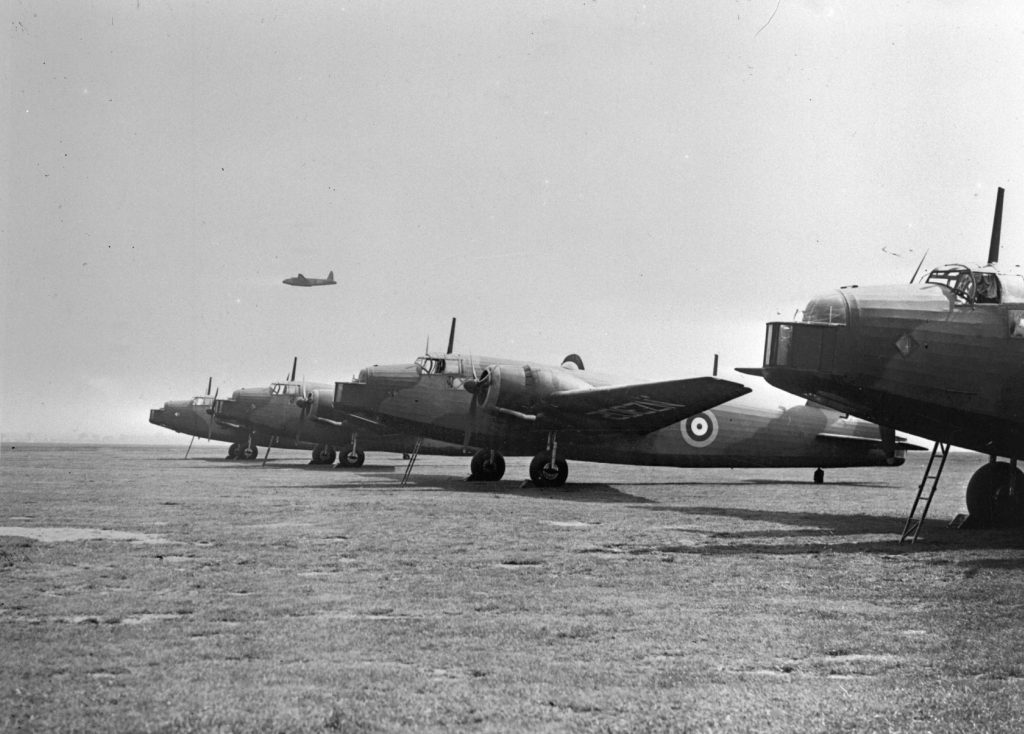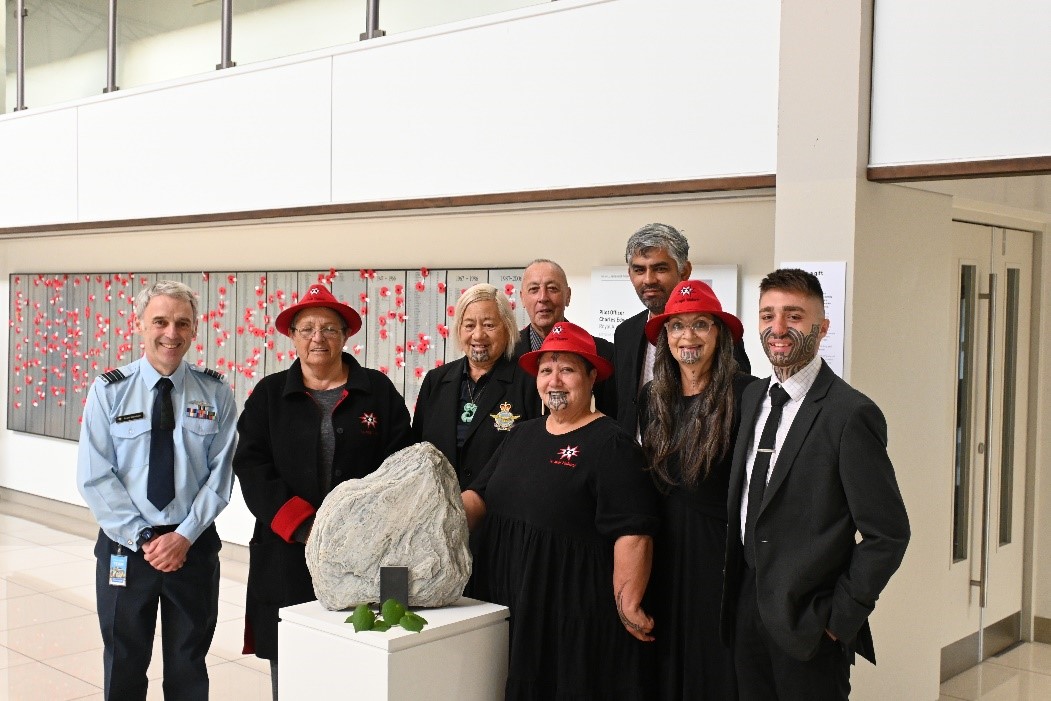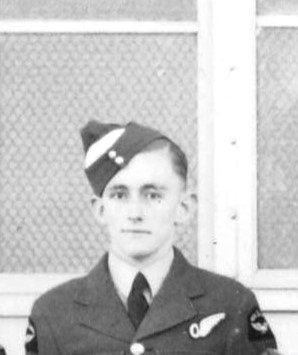A small piece of Aotearoa New Zealand is winging its way to Canada to commemorate the 7,000 Kiwis who trained with our Commonwealth cousins during World War Two.

A kōhatu (rock) from the West Coast was blessed by kaumatua before heading across the world to mark the centenary of the Royal Canadian Air Force (RCAF). It will form part of a new memorial at the RCAF’s National Military Cemetery at Beechwood, in Ottawa, Ontario.
The kōhatu represents the strong ties between the RNZAF and RCAF, including the more than 7,000 Kiwis who travelled to Canada to train as pilots, navigators and air bombers during World War Two as part of the Empire Air Training Scheme.
It was blessed by Maaka Tau of Te Taumata Tapu o Ngāi Tūāhuriri in front of the Roll of Honour at the Air Force Museum of New Zealand.
Maaka Tau said the karakia was a chance to give thanks to God and to everyone who had a hand in the project.
Museum Director Brett Marshall said the RNZAF had responded to a call from the Canadians to send over an appropriate treasure to symbolise the incredibly strong connection built over many years between the commonwealth air force partners.
The kōhatu rested in front of the museum’s Roll of Honour before heading to Canada in May.
“The Roll of Honour lists the names of all New Zealanders who have died whilst serving in our Air Force or serving in other Allied or Commonwealth Air Forces. Within it are the names of all New Zealanders who trained in Canada and never came home. It is therefore fitting that the kōhatu sits in front of the Roll of Honour for a period of time.’’
It is hard to comprehend today the huge resources that went into the RNZAF during World War Two.
RNZAF numbers peaked in May 1944 at just under 42,000, when the air force was operating 22 squadrons in Europe, the Pacific Theatre and at home in New Zealand.
Training the pilots, navigators and air bombers needed to get up to speed to supply all those squadrons was a huge task and New Zealand has Canada to thank for its success in building a modern air force in record time.

PR2662 Air Force Museum of New Zealand/TO Freeman collection.
Following the outbreak of war in 1939, it was decided that personnel from across the Commonwealth would be sent to Canada to be trained to satisfy the training needs of the Royal Air Force.
This was known as the Commonwealth Air Training Plan, part of an overall effort that was called the Empire Air Training Scheme.
Canada was chosen because of its wide-open spaces, easy access to aircraft manufacturing plants and fuel, and it was not too far to ferry the crews to Europe once training was complete. Crews could also train in all types of weather with no threat from enemy raids.
It was an enormous programme, with 231 training sites spread across Canada.
But Kiwis only represented about 5% of the 131,000 Commonwealth airmen trained by the RCAF as part of the plan.
The training scheme prepared RNZAF air crew who went on to fight predominantly in Europe and the Pacific. At the peak of the training between 1942 and 1944, there were between 1,000 and 2,000 RNZAF personnel in Canada at any one time.
Canada made a huge impression on the young Kiwis.
Training through a long winter in Manitoba in 1941, Pilot Officer Murray Carncross from Wellington described in a letter how he felt about the training: “I shall always look back on the last three months as one of the happiest periods of my life. And the funny part is that we have had only one leave in 7 weeks!’’
Sadly, a little less than a year later Murray Carncross was among the five crew of a No. 75 (NZ) squadron Wellington bomber who were killed when it was shot down in a raid over Hamburg, Germany.
He was only 19 years old and flying on his fifth operation.
After the invasion of Europe in 1944 the numbers being trained in Canada gradually reduced as demand fell.
President Franklin Roosevelt described Canada as “the aerodrome of democracy’’ for its part in the war effort. The scheme’s legacy was felt long into peace time as Canada-trained crews continued in aviation and its economy benefited from new and improved airfields and associated infrastructure across Canada.






